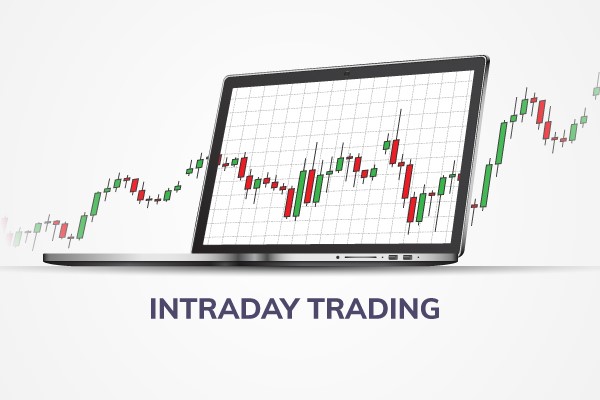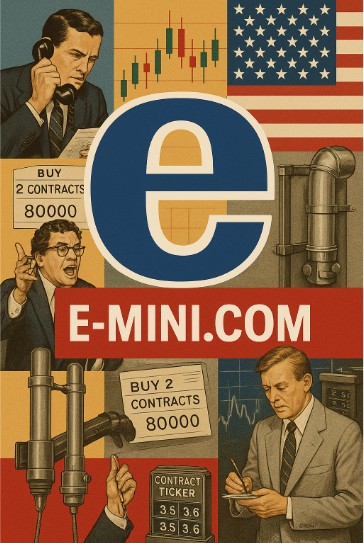Intraday trading is a type of trading where investors buy and sell futures within the same day. This means that all positions must be closed before the market closes for the day to secure profits or limit losses. Intraday traders are typically short-term traders who make many trades during the day but close out their positions prior to market closure.
Intraday trading indicators can help intraday traders determine when to enter and exit a position, what direction to take with their contract trades, and what price points are ideal for taking profits or minimizing losses. Common technical analysis indicators used by intraday traders include moving averages, Bollinger bands, MACD (Moving Average Convergence Divergence), RSI (Relative Strength Index) and Fibonacci retracements.
In order to make a profit in intraday trading, there are five key rules that traders should follow:
1. Set Your Goals – Before diving into intraday trading, it is essential to know what you want out of the experience and what type of risk you are willing to take on. Take some time to understand what kind of returns you would be happy with and what timeframe you intend to hold your positions for.
2. Do Your Research – You need an understanding about what futures or sectors are most likely going to move in the right direction during intraday trading sessions before committing any money. This includes studying fundamental analysis, technical analysis and chart patterns as well as keeping up to date with the latest news and events.
3. Use Stop Losses – There is no such thing as a perfect trade and it’s important to protect yourself against losses by setting sensible stop loss levels. This will help prevent your capital from suffering too much damage should the trade not go in your favour.
4. Go With the Trend – Intraday traders should pay attention to what direction the market is moving in at any given time and make sure that their trades are in sync with what the majority of others are doing.
5. Manage Your Risk – Always be aware of how much risk you’re taking on with each position, what kind of returns you can expect, and what your potential maximum loss could be. Risk management is essential if you want to be successful in intraday trading.
When it comes to choosing futures for intraday trading, traders should look for ones that have good liquidity, tight spreads and solid intra-day price movements. Popular futures such as Nasdaq Futures, heating oil, gold and crude oil are all great futures to use when engaging in intraday trading. It is also important to consider what type of strategy you plan on using with your trades. Common day trading strategies include scalping, momentum trading and news-based strategies.
In order to make a profit from intraday trading, the key is understanding what market conditions you’re entering into and using the right strategy for those conditions. Utilizing technical analysis, chart patterns and risk management rules will help you make the most of intraday trading and potentially earn a profit. Intraday trading is an exciting and rewarding way for experienced traders to capitalize on short-term market movements. By following the five key rules outlined above, intraday traders can maximize their potential profits and set themselves up for long-term success.
FAQs
What is Intraday Trading?
Intraday trading is a type of futures market investment that involves buying and selling futures in the same trading day. This type of investing activity is usually done through a broker or financial service provider, and it requires timing, skill, and knowledge on the part of the trader. An intraday trader typically looks to capitalize on short-term price movements in the futures market in order to generate profits.
What does Intraday mean?
Intraday refers to any trades that take place within one day’s trading session and close at the end of that particular day’s session. Intraday traders look for small gains during the course of a single trading session, and they generally don’t hold their positions overnight.
What Are the Best Tools for Intraday Trading?
The best tools for intraday trading depend on the trader’s individual style and preferences, but there are some common features that all traders value in an intraday trading platform. A good intraday trading platform should provide real-time quotes, customizable charting capabilities with multiple indicators (such as moving averages, MACD, etc.), advanced order types, technical analysis tools, risk management controls, and access to research reports from leading investment banks. Additionally, it should have a user-friendly interface and be easily accessible from different devices.
How Is Regular Trading Different From Intraday Trading?
Regular trading involves buying and selling a futures contract over multiple days or weeks, whereas intraday trading only involves buying and selling futures in the same day. Regular traders are less concerned with short-term price movements than intraday traders, so they may be willing to hold onto their positions for longer periods of time. Intraday traders typically have shorter holding periods since they’re looking to take advantage of smaller changes in futures prices within the same day rather than waiting for potentially larger long-term gains.
Why Should You Participate in Intraday Trading?
Intraday trading can be an effective way to make money if you have the right tools, knowledge, and discipline. It’s a great way to capitalize on short-term market movements, and it can be a relatively low-risk activity since you’re not holding onto your positions overnight. Additionally, intraday trading is incredibly fast-paced and may offer higher returns than regular investing due to the increased number of trades that can be made in a single day.
Which Strategy Is Best for Intraday Trading?
The best strategy for intraday trading depends on an individual trader’s goals and risk tolerance. Some traders prefer to use technical analysis to identify trends and make decisions based on price action, while others prefer fundamental analysis which involves studying economic news and events. Ultimately, the most successful intraday traders combine multiple strategies and have a solid understanding of the markets and their associated risks.
How Can I Earn Rs. 1000 a Day From Intraday?
The amount of money you can make from intraday trading depends on your strategy, skill level, and risk tolerance. Many traders may not be able to consistently earn Rs.1000 per day due to the inherent volatility in the futures market, but with enough practice and knowledge it is possible to achieve profits through intraday trading. To get started, you’ll need to find a reliable broker, develop a trading strategy that works for you, and learn how to manage risk effectively. Once you have these basics down, then you can start working on honing your skills as an intraday trader and potentially earning Rs.1000 per day or more. Keep in mind that you can lose the same amount per day (and sometimes, even more).




